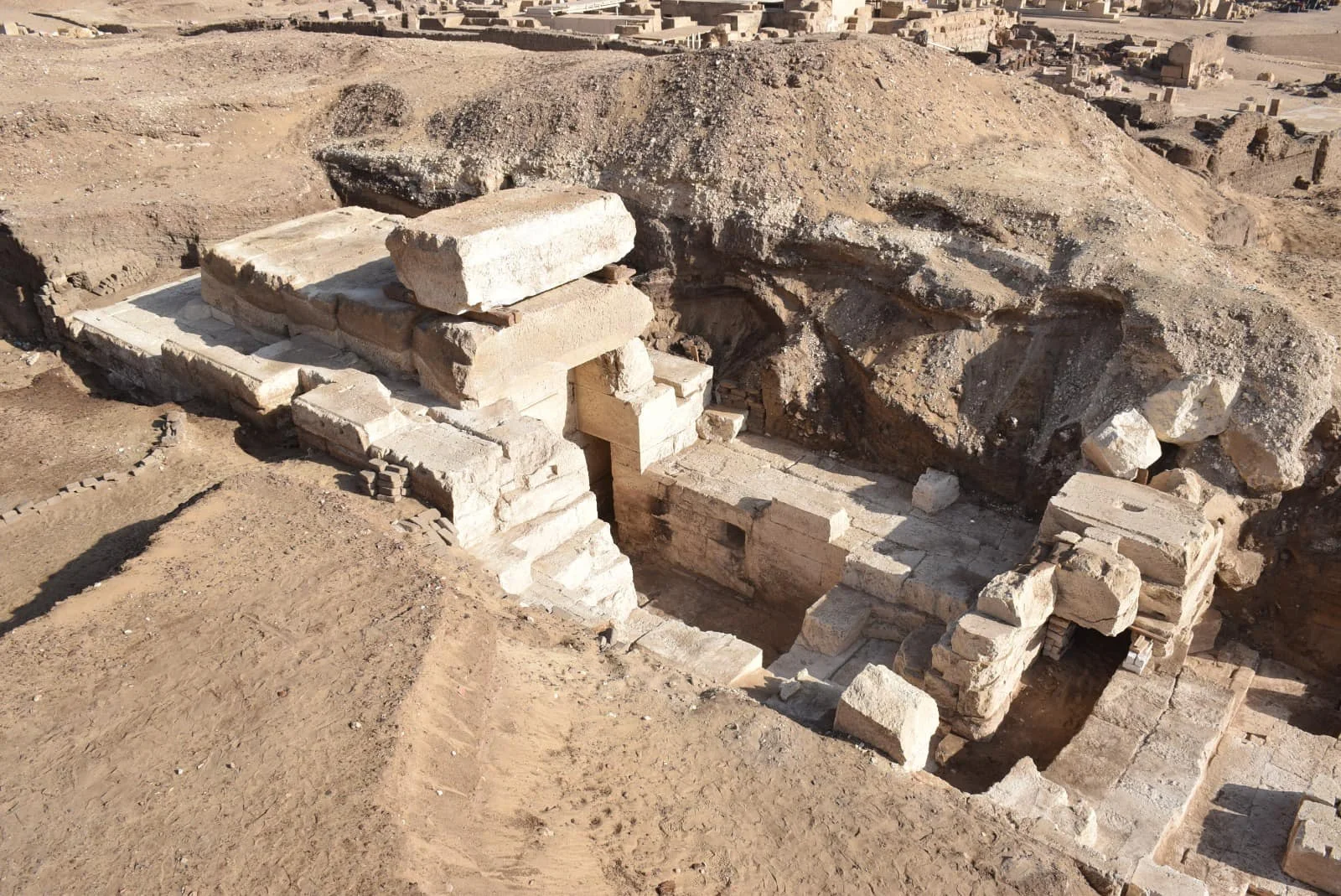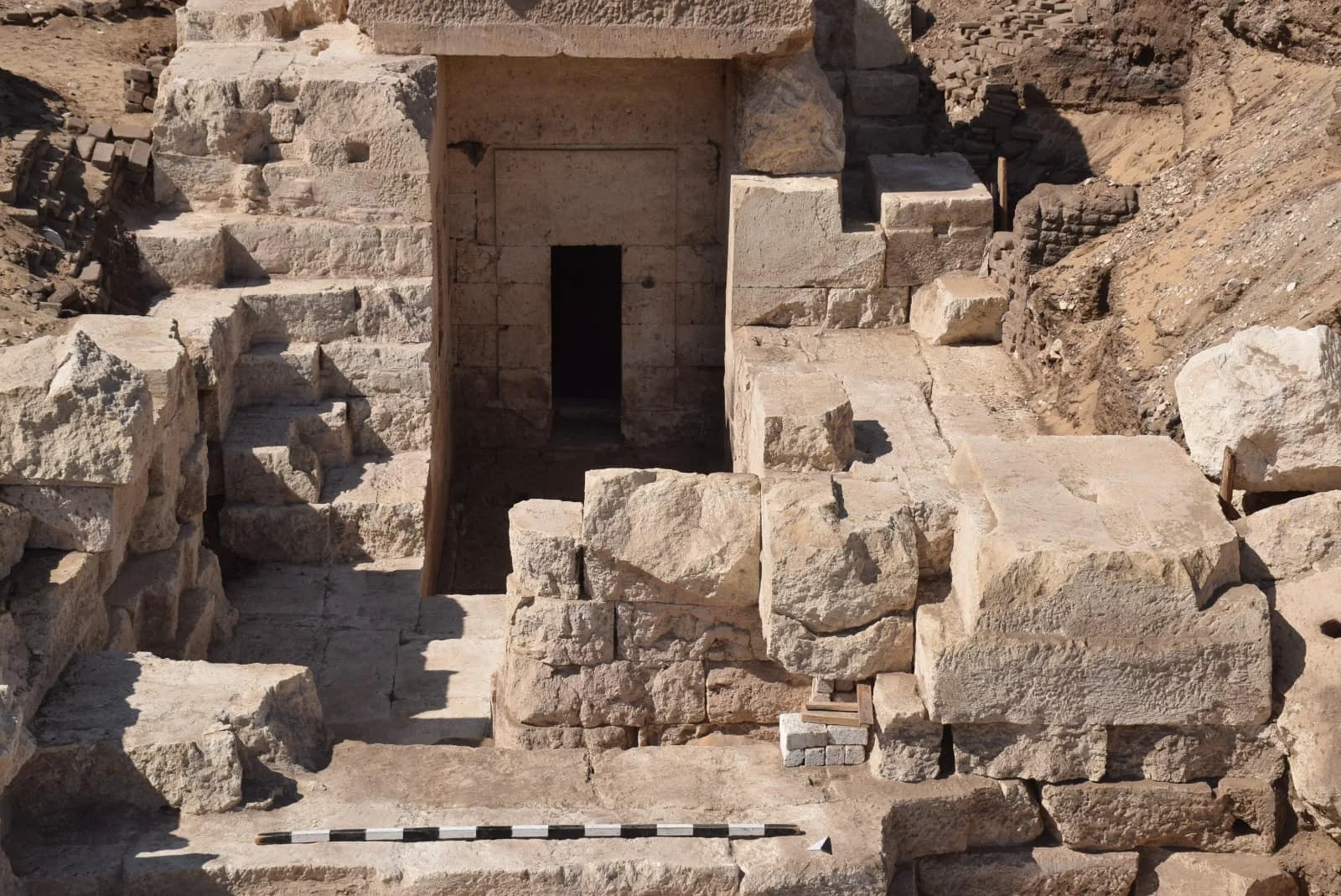A Joint Egyptian-German mission has discovered a Ptolemaic temple pylon on the western side of the main temple at Athribis, located in Sohag, Egypt.
The discovery was made by archaeologists from the University of Tübingen and Egypt’s Supreme Council of Antiquities, who were excavating at the Ancient Egyptian city of Athribis.
Athribis was a cult centre for the worship of the god Min-Re, his wife Repyt (a lioness goddess) and their son, the child-god Kolanthes. The site stretches for more than 74 acres, and consists of the temple complex, a settlement, the necropolis, and numerous ancient quarries.
The pylon, which spans 51 metres in length, is divided into two 24-metre-wide towers separated by an entrance gate. Based on the angle of the towers, the pylon would have originally reached a height of up to 18 metres, comparable to the pylon at the Luxor Temple.

According to Mohamed Abdel Badie, head of the Central Administration for Upper Egypt Antiquities and the Egyptian side of the mission, cleaning of the pylon revealed hieroglyphic inscriptions on both the exterior façade and interior walls. These inscriptions include scenes of the pharaoh receiving Repyt and the child-god Kolanthes.
“Through studying the cartouches discovered at the entrance and on one of the interior sides, it was determined that this gate dates back to the reign of Ptolemy VIII, who may have been the founder of the temple,” said Abdel Badie. said.
Ptolemy VIII was co-ruler, and at times sole ruler of Egypt from 170 BC to 116 BC during the Ptolemaic dynasty. Ancient Greek texts describe him as cruel, fat and degenerate, but also one of the shrewdest politicians of the Hellenistic Age.
Archaeologists plan to continue investigating the pylon in upcoming excavation seasons through the University of Tübingen’s Athribis Project, with support from the Supreme Council of Antiquities.
Header Image Credit : Ministry of Tourism and Antiquities
Sources : Ministry of Tourism and Antiquities





